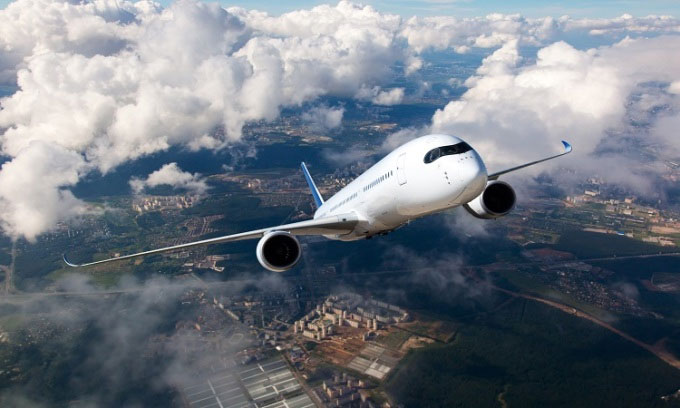Factors such as temperature, weight and even direction of travel all determine the altitude of a commercial airliner.

Commercial aircraft usually fly at altitudes above 9,144m. (Photo: Flying Magazine)
The exact altitude of a passenger plane at any point in flight depends on many factors , such as weight, temperature and weather, direction of travel, and direction from air traffic control. In most cases, passenger planes will fly at more than 9,144 meters , according to John Cox, a former commercial pilot and director of the consulting firm Safety Operating Systems . Planes can reach heights of 12,192 – 12,496m, but that is relatively rare.
Tom Adcock, a former air traffic controller and director of safety and technology at the National Association of Air Traffic Controllers (NATCA) labor union, makes a similar estimate. Boeing 757 and 767 aircraft can fly up to 12,802 m and 13,106 m respectively. The 747-400 can even fly higher. Different types of aircraft have different ceiling (maximum altitude).
Air traffic controllers often consider the compass direction of the aircraft in flight when giving pilots altitude instructions. Westbound flights are instructed to fly in even numbers such as 11,582m (38,000 feet), while eastbound flights are directed to fly in odd numbers such as 11,887m (39,000 feet). That way, aircraft traveling in the opposite direction will have a vertical gap. Planes with a northeast or southeast direction still fly at an odd number of altitudes. Similarly, aircraft with a northwest or southwest direction fly at an even number of altitudes. However, if the plane is heading east at night and wants to fly at 9,754 meters (32,000 feet), the pilot can make a request.
According to Cox, the higher the altitude, the more efficient the jet engine is and the less drag in the air. Pilots are motivated to consume less fuel because they want to end the flight with more fuel in reserve, so they have more options in the event of a delay while in the air.
Flight management computers provide pilots with information about the aircraft’s optimal altitude as well as maximum altitude, in terms of weight and air temperature. Airplanes can go higher after burning fuel and become lighter. The goal is to fly smoothly and with little headwind if flying west, and flying high can help pilots achieve that.
